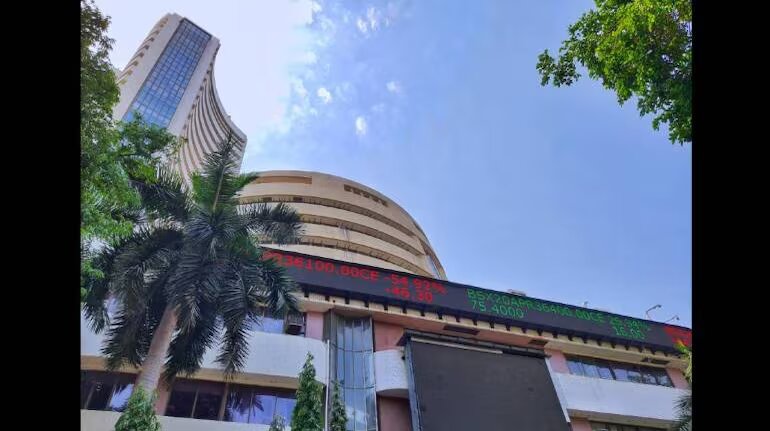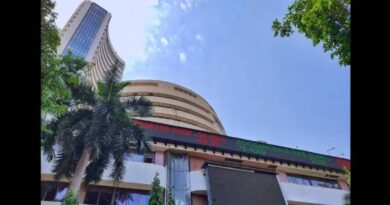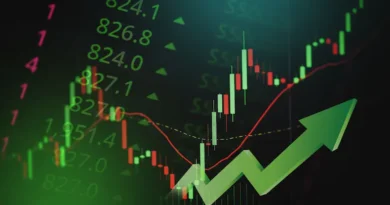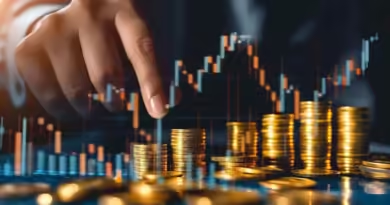Stock Market Today: Top 10 things to know before the market opens on 13th September
The benchmark Sensex and Nifty indices are likely to open marginally higher on September 13 as trends in the GIFT Nifty indicate a positive start for the broader index with a gain of 62 points.
The BSE Sensex gained 94 points in the previous session closing at 67,221, while the Nifty50 declined for the first time in the last eight straight sessions, down 3 points amid volatility at 19,993, and formed a long bearish candlestick pattern on the daily timeframe
Jatin Gedia, technical research analyst at Sharekhan by BNP Paribas, believes that the index is due for consolidation after a sharp rally in the last seven trading sessions.
The range of consolidation is likely to be 20,100 – 19,800.
The pivot point calculator indicates that the Nifty may be taking support at 19,931, followed by 19,885 and 19,810.
On the higher side, 20,081 can act as the key resistance followed by 20,127 and 20,202.
Stay tuned to Moneycontrol to find out what happens in the currency and equity markets today.
We have collated a list of important headlines across news platforms, which could impact Indian as well as international markets.
GIFT Nifty
The GIFT Nifty indicates a marginally positive start for the broader index with a gain of 62 points.
GIFT Nifty futures stood at 20,092 points after making a high of 20,153 points.
US Markets
US stock futures were little changed Tuesday night as investors looked towards the release of the consumer price index for more insights on inflation.
Futures tied to the Dow Jones Industrial Average inched lower by 6 points, or 0.02 percent.
S&P 500 futures lost 0.02%, while Nasdaq 100 futures ticked up 0.04 percent.
The major averages all posted losses during Tuesday’s main trading session.
The Nasdaq Composite was particularly hard-hit, declining 1 percent as tech names came under pressure.
The S&P 500 fell nearly 0.6 percent, while the Dow ticked down less than 0.1 percent.
Apple slipped 1.7 percent, weighing on the indexes, while Oracle notched its worst day in more than 20 years on the back of disappointing revenue and soft guidance.
Wall Street’s focus is now turning toward the August CPI report, due Wednesday morning.
Economists are estimating a 3.6 percent year-over-year rise in inflation, according to Dow Jones.
This would mark an increase from the prior month’s reading of 3.2 percent.
Core CPI, which omits food and energy costs due to volatility, is forecasted to have risen 4.3 percent in August, compared to a 4.7 percent gain in July.
European Markets
European stock markets closed slightly lower on Tuesday, paring earlier gains as investors monitor a busy week for economic data.
The pan-European Stoxx 600 ended 0.2 percent lower, with sectors and major bourses pointing in opposite directions. Chemicals stocks dipped 1.5 percent to lead losses, while auto and telecom stocks edged up 0.7 percent.
The index gained Monday as investors were cheered by signs of easing deflation pressures in China, sending metals prices and mining stocks higher.
US inflation data is the one to watch this week, with the latest consumer price index figures due Wednesday and producer price index Thursday.
China will also release a slew of data Friday, including on house prices, industrial production, retail sales and unemployment.
Asian Markets
Asia-Pacific markets are mixed as investors assess key economic data out of Japan and South Korea.
South Korea’s unemployment rate in August came in at 2 percent, its lowest since June 1999.
Meanwhile, corporate confidence in Japan fell in September, among both manufacturers and non-manufacturers, according to the Reuters Tankan poll.
Confidence among large manufacturers slid to +4, from +12 in August.
The non-manufacturers index dropped nine points to hit +23 in September.
Japan’s Nikkei 225 extended gains after a three-day winning streak, opening up 0.23 percent, while the Topix also saw a similar gain of 0.26 percent.
South Korea’s Kospi inched up 0.14 percent, but the Kosdaq was down 0.67 percent.
Australia’s S&P/ASX 200 slid 0.5 percent in early trade. Futures for Hong Kong’s Hang Seng index stood at 18,156, pointing to a stronger open compared to the HSI’s close of 18,025.89.
RBI likely to keep holding repo rates despite inflation easing in August, say experts
The headline retail inflation for the month of August slowed to 6.83 percent but remained above the RBI’s tolerance band, owing to which experts said that the Reserve Bank of India (RBI) is likely to maintain a pause in the repo rate cycle in FY 2023-24.
“On the monetary policy front, RBI has indicated that it will look through the food-led spike in inflation as it is expected to be transient. However, it indicated its willingness to act if inflation shows signs of generalization i.e spreading from food to core inflation.
For now, core inflation has remained well behaved with moderation in both services and goods inflation.
RBI is expected to remain on pause in FY24,” said Gaura Sen Gupta, Economist, IDFC Bank.
Aditi Nayar, Chief Economist, Head Research & Outreach, ICRA, said: “While we expect the CPI inflation to print in the range of 5.3-5.5 percent in September 2023, this will still entail an average of 6.6 percent for Q2 FY2024, well above the MPC’s August 2023 forecast for this quarter.
We expect RBI to call for an extended pause.”
Inflation is falling but don’t uncork the bubbly yet
Will the easing of retail inflation in the month of August prompt a change in the rate stance within the monetary policy committee (MPC)?
Let’s look at the numbers first. The primary reason for the fall in retail inflation to 6.83 percent from 7.44 percent in July is a fall in vegetable prices.
But, for MPC, the even bigger good news is the easing of core inflation, which is the non-food, non-oil part of the retail inflation, which too fell to 4.9 percent.
Both these factors should give some positive comfort to the rate-setting panel; but not enough to instill confidence in the panel to change the rate course at the next meeting in October.
Samir Arora returns: How good is the track record of the OG of Indian mutual funds
Things didn’t really work out the way Samir Arora had thought back in 2003.
As one of the earliest in his league, he was arguably the first to attempt a management-led buyout in India, at a time when the term fund manager was yet to be commonplace.
Having managed funds at Delaware-based Alliance Mutual Fund with a remarkable track-record, and riding high on popularity, Arora made a pitch to buy out the fund when the American manager had already negotiated a deal to sell it out to HDFC Mutual Fund.
Such was his popularity that the fund faced redemptions on rumours of his exit, so much so that HDFC Mutual Fund pulled out of the deal, and Alliance decided to put its sale on hold.
In his next innings, Arora turned a hedge fund manager, setting up Helios Capital in 2005, with exclusive research support from Artemis Advisors India led by his co-pilot and long-term confidante Dinshaw Irani, who was then an FMCG analyst at Alliance Capital. Arora’s unique ability put across complicated ideas simply has got him fans in millions – 5.52 lakh, to be precise – on X platform.
Paytm will not need funding in near future with free cash flow: CFO Madhur Deora
Mobile payments firm Paytm will not require funding in the near future as the company has Rs 8,300 crore of cash balance and is confident of becoming sustainable owing to the free cash flow.
“We don’t see the need for funding in the near future.
We have zero debt, and we are very healthy from a balance sheet standpoint,” Madhur Deora, executive director, president and group chief financial officer told shareholders at the company’s annual general meeting.
Company founder and CEO Vijay Shekhar Sharma said that its recent launches of various Soundbox devices show how much it understands the needs of Indian merchants and consumers.
“We are expanding our deployment each quarter, with more and more innovative payment devices, to bring technology for every small shop in India.
We believe a small merchant once given access to correct technology and financial services creates the true growth engine of India. It is where jobs are to be created and we create inclusive growth in our country,” Sharma added.
Retail inflation eases more than expected to 6.83% in August
India’s headline retail inflation rate fell to 6.83 percent in August, data released by the Ministry of Statistics and Programme Implementation on September 12, as vegetable prices cooled somewhat compared to the previous month.
At 6.83 percent, the Consumer Price Index (CPI) inflation print for August is 61 basis points lower than July’s 15-month high of 7.44 percent.
However, it is the second month in a row that inflation has come in higher than the upper bound of the Reserve Bank of India’s (RBI) tolerance limit of 2-6 percent.
It is also the 47th month in a row that it has stayed above the central bank’s medium-term target of 4 percent.
One basis point is one-hundredth of a percentage point.
Oil Prices
Oil prices jumped about 2% to a near 10-month high on Tuesday on a tighter supply outlook and OPEC optimism over the resilience of energy demand in major economies.
Brent futures rose $1.64, or 1.8 percent, to $92.28 a barrel by 11:15am EDT (1515 GMT).
US West Texas Intermediate (WTI) crude rose $1.91, or 2.2 percent, to $89.20.
Both benchmarks remained technically overbought for an eighth straight day, on track for their highest settlements since November 2022.
The Organization of the Petroleum Exporting Countries (OPEC) stuck to its forecasts for robust growth in global oil demand in 2023 and 2024, citing signs that major economies are stronger than expected. OPEC’s monthly report forecast world oil demand will rise by 2.25 million barrels per day (bpd) in 2024.
Dollar Index
The Dollar index traded 0.15 percent higher in futures at 104.72, whereas the value of one dollar hovered near Rs 83.09.
Gold Prices
Gold slipped to a more than two-week low on Tuesday as the dollar rebounded, while investors positioned for the US inflation print on Wednesday.
Spot gold was down 0.6 percent at $1,909.50 per ounce, its lowest since August 25. US gold futures dipped 0.8 percent to $1,932.60.
People are getting out of the market and waiting to see how the data comes out, and maybe buy gold at a lower price because there’s still (some) safety buying in gold,” said Bob Haberkorn, senior market strategist at RJO Futures.
FIIs and DIIs
Foreign institutional investors (FII) sold shares worth Rs 1,047.19 crore, while domestic institutional investors (DII) bought Rs 259.48 crore worth of stocks on September 12, provisional data from the National Stock Exchange (NSE) showed.
ByMoneycontrol




